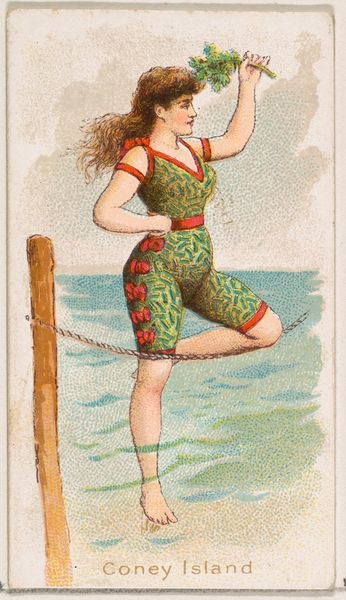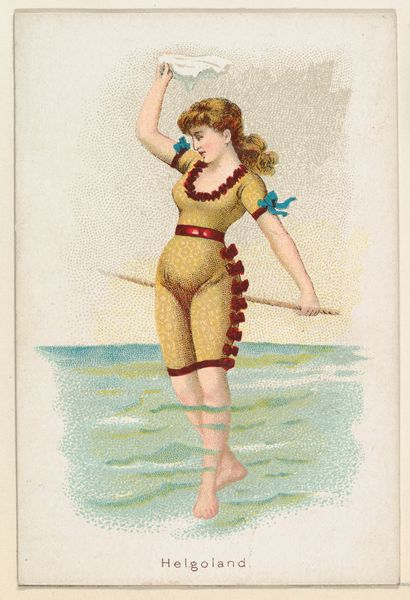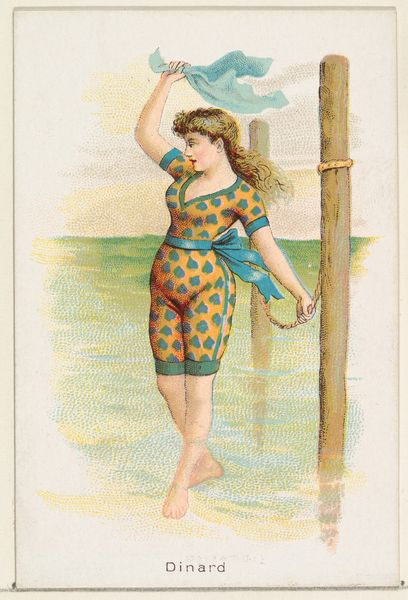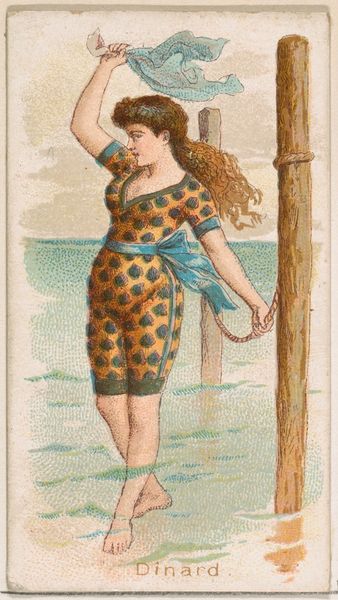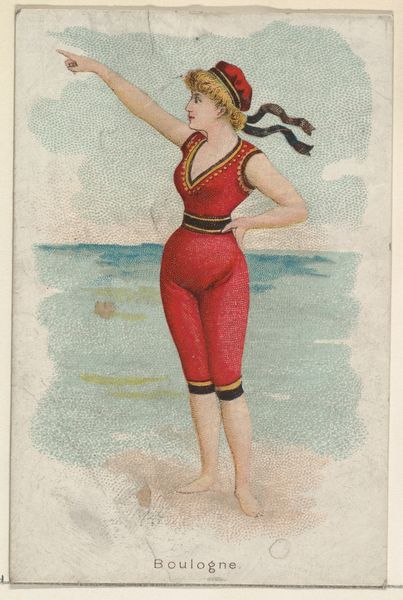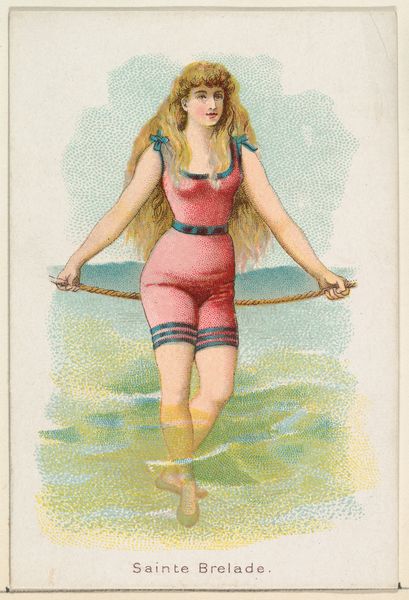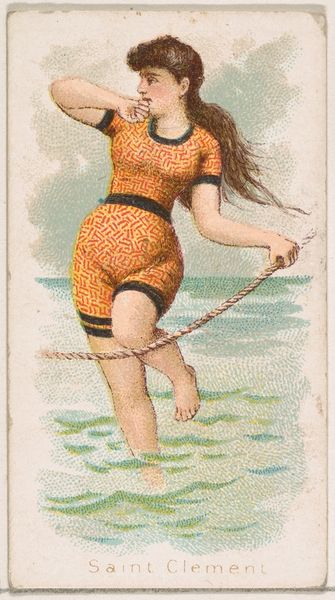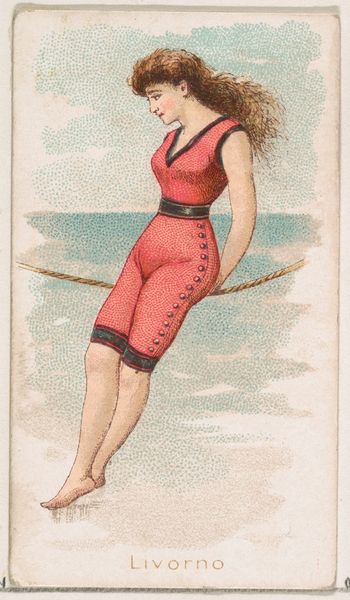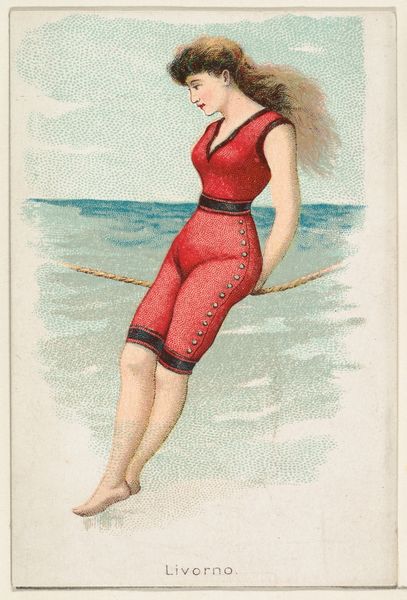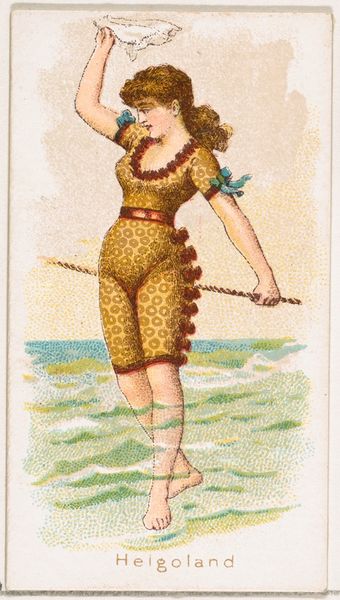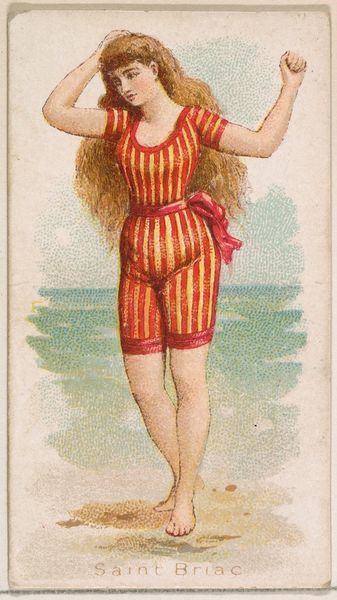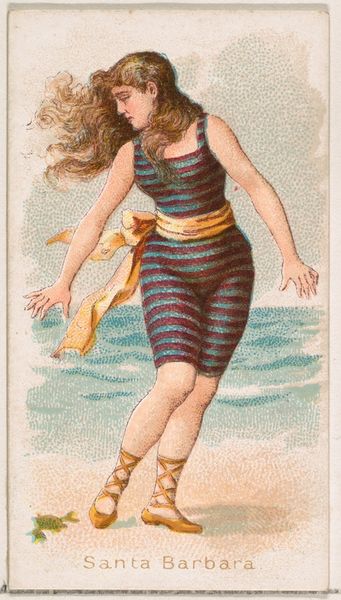
Coney Island, from the Beautiful Bathers series (N192) issued by Wm. S. Kimball & Co. 1889
0:00
0:00
drawing, coloured-pencil, print
#
portrait
#
drawing
#
coloured-pencil
# print
#
impressionism
#
landscape
#
figuration
#
coloured pencil
#
men
#
watercolour illustration
#
decorative-art
#
green and blue
#
watercolor
#
profile
Dimensions: Sheet: 3 3/4 × 2 1/2 in. (9.5 × 6.4 cm)
Copyright: Public Domain
Editor: So, this is "Coney Island, from the Beautiful Bathers series," printed around 1889 by William S. Kimball & Co. It’s a coloured pencil print and gives off such a bright, playful vibe. I’m immediately struck by the figure’s almost theatrical pose. What can you tell me about the historical context surrounding imagery like this? Curator: This print offers a fascinating glimpse into the evolving representation of women and leisure in late 19th-century America. Notice how Coney Island, as a burgeoning amusement destination, is branded here, suggesting a cultural shift towards mass entertainment. These "Beautiful Bathers" trading cards coincided with growing debate about women's roles and increased female visibility in public spaces. How does this image, distributed through tobacco products, participate in or perhaps challenge those discussions? Editor: I hadn't considered the connection to tobacco or its role in public discourse at all. It feels almost contradictory, like promoting feminine ideals while simultaneously endorsing a product with, well, complicated health implications. Did the series gain criticism? Curator: That tension you point out is key. These cards weren't high art but popular commercial images, designed to be collected and traded. Understanding that context—their purpose, distribution, and audience—is essential. There were definitely moral anxieties at the time about advertising and commercial culture, including concern over the image of women being exploited to sell consumer products, and even whether or not bathing suits covered enough skin! So what does this tell us about Victorian values and marketing strategies? Editor: It highlights the complexity of the era! Marketing could tap into and reinforce particular societal beliefs, while also slowly pushing boundaries of women’s image. I hadn’t considered how the context shapes our view of the image. Curator: Exactly! It shows how understanding the socio-political backdrop is crucial to fully grasp the multifaceted nature of visual culture, and how simple-seeming images carry far more complex messages than you might think at first glance. Editor: This was definitely an eye-opening lesson for me; I am grateful for your historical perspective. Curator: Likewise, your attention to the card’s theatricality prompted a more nuanced investigation!
Comments
No comments
Be the first to comment and join the conversation on the ultimate creative platform.
